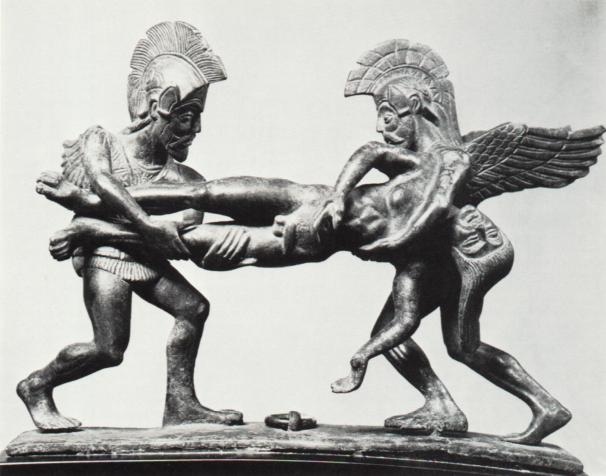

"Man and His World International Fine Arts Exhibition Expo 67 Montréal Canada" by Pierre Dupuy © the Canadian Corporation for the 1967 World Exhibition and the National Gallery of Canada
| Etruscan. c. 4th Century
B.C.
Death and Sleep carrying Sarpedon This bronze cista handle of Death and Sleep, bearing the body of Sarpedon, is probably of the early fourth century B.C. The piece once formed the decorative handle of the cover of a tall circular bronze chest or cista, designed to be an elegant container of milady's toilet articles, and was no doubt found, like so many similar cistae, in an Etruscan tomb. The wings of the supporting figures indicate their mythological character. These figures, to judge from similar Greek representations on pottery which were the inspirations of the Etruscan metal-worker, should be Sleep (Hypnos) and Death (Thanatos). The dead hero could be Sarpedon, brother of King Minos of Crete, who was killed by Patroclus (Iliad XVI), or possibly Memnon, son of the rosy-fingered Dawn, killed at Troy by Achilles. To the Greeks the heroes of the Iliad were closely watched over and guided by various of the Olympian gods, and some accounts say it was Eos herself who bore the dead body of her son from the battle-field. The stiffening but beautiful body of the hero and the solicitude of the attendant figures is finely expressed in this delicate piece of craftsmanship, far superior to usual Etruscan handle pieces. |